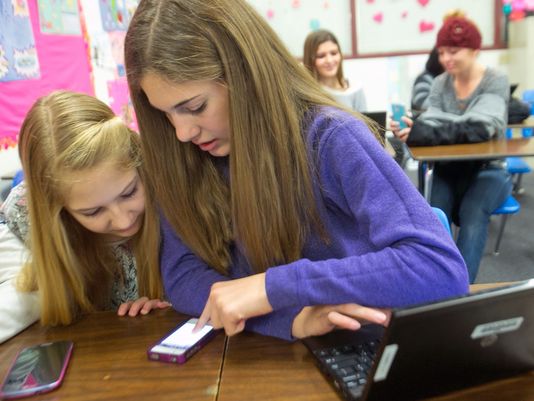Gavin Leach is an instructor at the University of New Mexico in the Department of Communication and Journalism. You can contact him at gleach@unm.edu, or on Facebook and LinkedIn.
Every semester college professors seem to struggle with how to manage effectively students’ use of their cell phones. According to a recent study in The Journal of Behavioral Addictions, over 60% of students reported that they self-identify as being “addicted” to their cell phones, citing that they felt a “great deal of anxiety” when apart from their phones after a short period of time (Park, Kee, & Valenzuela, 2009). How are faculty supposed to teach when their students’ eyeballs are glued – perhaps even unknowingly – to that tiny little screen? Instead of a deep introspective look into why and where a professor might have failed, a better strategy can be to consider how an instructor can leverage the online capabilities of mobile devices to increase and enhance the academic value of their in-class writing assignments. Implementation of these three strategies may encourage academic engagement with their cell phones.
First, try to illustrate the ease in which students can use their mobile devices to find support for their individual claims. One technique is to have a student time the instructor to see how long it to find scholarly resources online. First, the faculty member takes out his/her own mobile device and clicks on the Google Scholar app; within seconds, there are a multitude of scholarly sources from a diverse selection of academic journals and publications. Students are often amazed at how quickly and efficiently they can find reliable and credible references/sources. This quick display of legitimate research efforts shows the students that they can use their phones in class to get their work done quickly and effectively.
Another method to show the advantage of using a mobile phone to cite their sources accurately using the APA Cited app. Students can use this app to cite their sources for their reference pages. This easy-to-use app has the student fill in a few key categories, and then out comes the proper APA formatting for their references. A simple copy-and paste-feature allows the student to directly insert this source into their in-class assignment.
Lastly, one of the most current approach to utilizing cell phones in the classroom is the RescueTime app. RescueTime tracks the amount of time that students spend on other media (Facebook, Twitter, and Instagram) that is not conducive to the writing assignment at hand. Students can monitor and even limit the amount of time allocated to social media sites.
Our students have grown up with mobile technology in much the same way other generations grew up with calculators and computers. Many communication and psychology studies have described this recent phenomenon in a largely positive manner (Lindquist et. al., 2007). Embracing students’ evolutionary composition practices can capitalize and promote their interconnectivity with mobile technology. When it comes to cell phones in the classroom, change is hard for some faculty. Good or bad, these changes can start with the teacher.
References
Park, N., Kee, K. F., & Valenzuela, S. (2009). Being immersed in social networking environment: Facebook groups, uses and gratifications, and social outcomes. CyberPsychology & Behavior, 12(6), 729-733.
Lindquist, D., Denning, T., Kelly, M., Malani, R., Griswold, W. G., & Simon, B. (2007). Exploring the potential of mobile phones for active learning in the classroom. ACM SIGCSE Bulletin, 39(1), 384-388.

